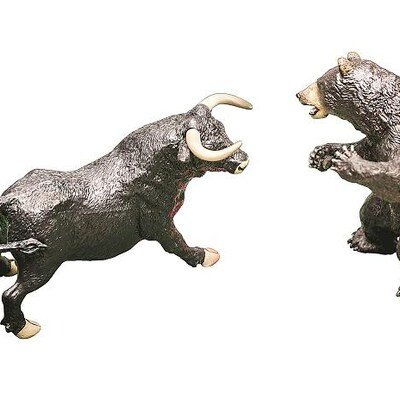Algorithmic
trading is experiencing a significant uptick in foreign exchange markets as
institutional investors increasingly turn to automated strategies to navigate
fragmented liquidity and compressed spreads. This trend, driven by calmer
market conditions and technological advancements, reshapes how currencies
are traded globally.
Nomura, a
major player in the FX space, has witnessed a fourfold increase in client
algorithmic trading volumes since January 2023, with pension funds and asset
managers leading the charge.
While algorithmic
trading traces its roots to the equities market in the 1970s, it only
gained prominence in FX in the mid-2000s. Today, the spot FX market is a
complex ecosystem of banks transacting across multiple venues, with each
institution typically offering a variety of algo strategies.
“As
markets have become more electronic and fragmented, clients want execution
options and analysis to measure their flow rather than charging into the
market,” Antony Foster, Head of G-10 Spot Trading for EMEA at Nomura in
London, commented, attributing this shift to evolving market dynamics.
This surge
aligns with industry expectations. A last-year survey by Coalition Greenwich
found that 69%
of respondents anticipate further growth in FX algo usage.
The FX
market, with its daily trading volume exceeding $6 trillion, has become
increasingly complex. Today’s spot market features dozens of banks transacting
across more than 15 venues for the euro-dollar pair alone, with each
institution typically offering multiple algo strategies.
Factors Driving Algo
Adoption
The appeal
of algorithmic
trading in FX stems from several factors, including cost reduction, enhanced
speed and precision, improved risk management, and the lingering effects of
remote work practices established during the COVID-19 pandemic.
Ben Robson, EMEA Head of e-FX Sales at Nomura
“It’s
no longer seen as a tool to replace traders on the desk but instead augment the
set of options around execution,” Ben Robson, EMEA Head of e-FX Sales at
Nomura, noted. He emphasized that current discussions focus heavily on
data-driven decision-making and transaction cost analysis.
7
factors driving algo trading adoption:
- Calmer markets: Relatively stable FX markets over
the past year have reduced the need for constant broker interaction, making
automated strategies more appealing. - Spread compression: Fierce competition among banks and
market-makers has led to tighter spreads, pushing traders to seek more
efficient execution methods. - Liquidity
fragmentation: With
dozens of electronic platforms hosting currency trading, algorithms have become
essential for navigating this complex landscape. - Cost efficiency: Algo trading can significantly
reduce transaction costs by minimizing bid-ask spreads and lowering the market
impact of large trades. - Speed
and precision: In a
market where milliseconds matter, algorithms can execute trades faster and more
accurately than human traders. - Risk management: Advanced algorithms offer superior
risk monitoring and management capabilities, adapting strategies in real-time
based on market data. - COVID-19
legacy: The
pandemic accelerated the adoption of automated trading as market participants
working remotely found it easier to rely on algos.
While algo
trading has increased market liquidity by providing continuous quotes, Nomura
cautions that this liquidity can be volatile, with algorithms quickly
withdrawing during periods of market turbulence.
The Future of FX Algo
Trading
As the FX
algo trading landscape evolves, regulatory scrutiny is expected to
intensify. However, industry insiders view this as a positive development for
long-term market maturity.
Antony Foster, Head of G-10 Spot Trading for EMEA at Nomura
“The
growth in algo trading across FX markets represents a significant shift in how
currency trading is conducted, and it will only get more sophisticated in the future,” Foster added.
The outlook
for algorithmic trading in FX appears bright, with
artificial intelligence poised to usher in a new era of growth. AI
integration promises to revolutionize the market by enabling more adaptive and
predictive models capable of learning from vast datasets.
As
institutions continue to seek efficiency and cost-effectiveness in their FX
operations, the role of algorithmic trading is likely to expand further.
However, the human element remains crucial. Nomura’s approach, for instance,
emphasizes the importance of expert guidance alongside algorithmic tools.
“Our
USP is to offer a tailored response rather than just provide data and leave the
client to make decisions without speaking to experts,” said Robson.
Algorithmic
trading is experiencing a significant uptick in foreign exchange markets as
institutional investors increasingly turn to automated strategies to navigate
fragmented liquidity and compressed spreads. This trend, driven by calmer
market conditions and technological advancements, reshapes how currencies
are traded globally.
Nomura, a
major player in the FX space, has witnessed a fourfold increase in client
algorithmic trading volumes since January 2023, with pension funds and asset
managers leading the charge.
While algorithmic
trading traces its roots to the equities market in the 1970s, it only
gained prominence in FX in the mid-2000s. Today, the spot FX market is a
complex ecosystem of banks transacting across multiple venues, with each
institution typically offering a variety of algo strategies.
“As
markets have become more electronic and fragmented, clients want execution
options and analysis to measure their flow rather than charging into the
market,” Antony Foster, Head of G-10 Spot Trading for EMEA at Nomura in
London, commented, attributing this shift to evolving market dynamics.
This surge
aligns with industry expectations. A last-year survey by Coalition Greenwich
found that 69%
of respondents anticipate further growth in FX algo usage.
The FX
market, with its daily trading volume exceeding $6 trillion, has become
increasingly complex. Today’s spot market features dozens of banks transacting
across more than 15 venues for the euro-dollar pair alone, with each
institution typically offering multiple algo strategies.
Factors Driving Algo
Adoption
The appeal
of algorithmic
trading in FX stems from several factors, including cost reduction, enhanced
speed and precision, improved risk management, and the lingering effects of
remote work practices established during the COVID-19 pandemic.
Ben Robson, EMEA Head of e-FX Sales at Nomura
“It’s
no longer seen as a tool to replace traders on the desk but instead augment the
set of options around execution,” Ben Robson, EMEA Head of e-FX Sales at
Nomura, noted. He emphasized that current discussions focus heavily on
data-driven decision-making and transaction cost analysis.
7
factors driving algo trading adoption:
- Calmer markets: Relatively stable FX markets over
the past year have reduced the need for constant broker interaction, making
automated strategies more appealing. - Spread compression: Fierce competition among banks and
market-makers has led to tighter spreads, pushing traders to seek more
efficient execution methods. - Liquidity
fragmentation: With
dozens of electronic platforms hosting currency trading, algorithms have become
essential for navigating this complex landscape. - Cost efficiency: Algo trading can significantly
reduce transaction costs by minimizing bid-ask spreads and lowering the market
impact of large trades. - Speed
and precision: In a
market where milliseconds matter, algorithms can execute trades faster and more
accurately than human traders. - Risk management: Advanced algorithms offer superior
risk monitoring and management capabilities, adapting strategies in real-time
based on market data. - COVID-19
legacy: The
pandemic accelerated the adoption of automated trading as market participants
working remotely found it easier to rely on algos.
While algo
trading has increased market liquidity by providing continuous quotes, Nomura
cautions that this liquidity can be volatile, with algorithms quickly
withdrawing during periods of market turbulence.
The Future of FX Algo
Trading
As the FX
algo trading landscape evolves, regulatory scrutiny is expected to
intensify. However, industry insiders view this as a positive development for
long-term market maturity.
Antony Foster, Head of G-10 Spot Trading for EMEA at Nomura
“The
growth in algo trading across FX markets represents a significant shift in how
currency trading is conducted, and it will only get more sophisticated in the future,” Foster added.
The outlook
for algorithmic trading in FX appears bright, with
artificial intelligence poised to usher in a new era of growth. AI
integration promises to revolutionize the market by enabling more adaptive and
predictive models capable of learning from vast datasets.
As
institutions continue to seek efficiency and cost-effectiveness in their FX
operations, the role of algorithmic trading is likely to expand further.
However, the human element remains crucial. Nomura’s approach, for instance,
emphasizes the importance of expert guidance alongside algorithmic tools.
“Our
USP is to offer a tailored response rather than just provide data and leave the
client to make decisions without speaking to experts,” said Robson.





